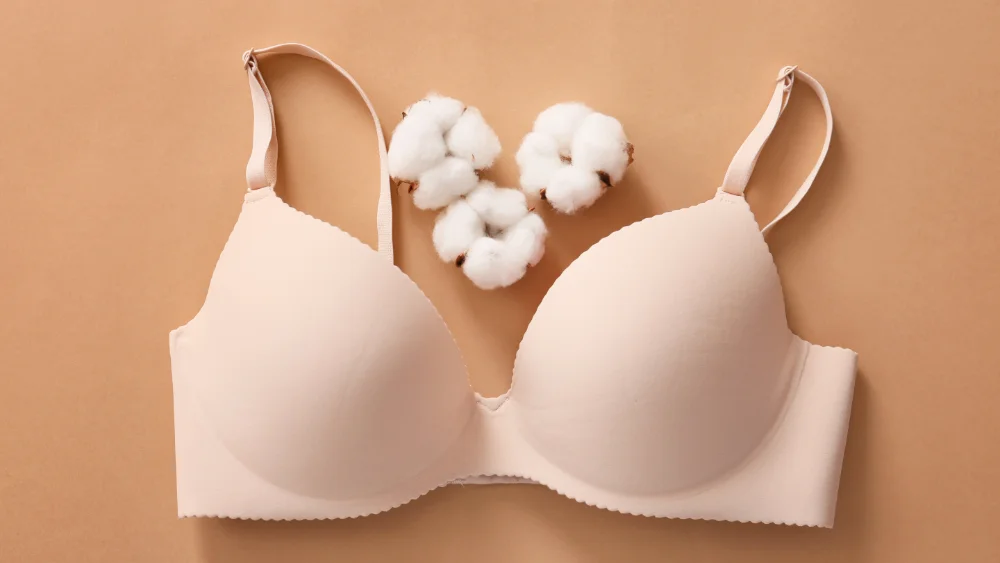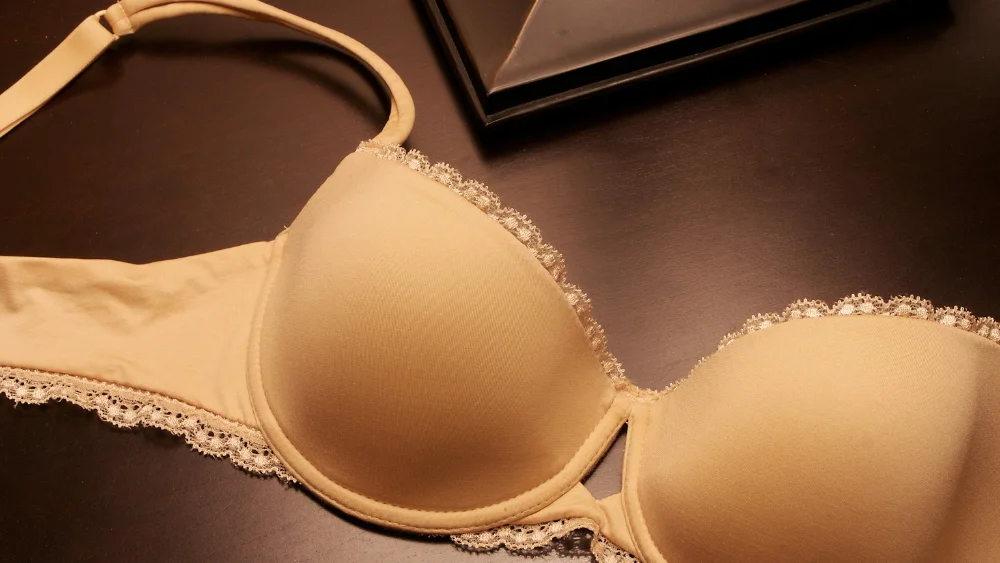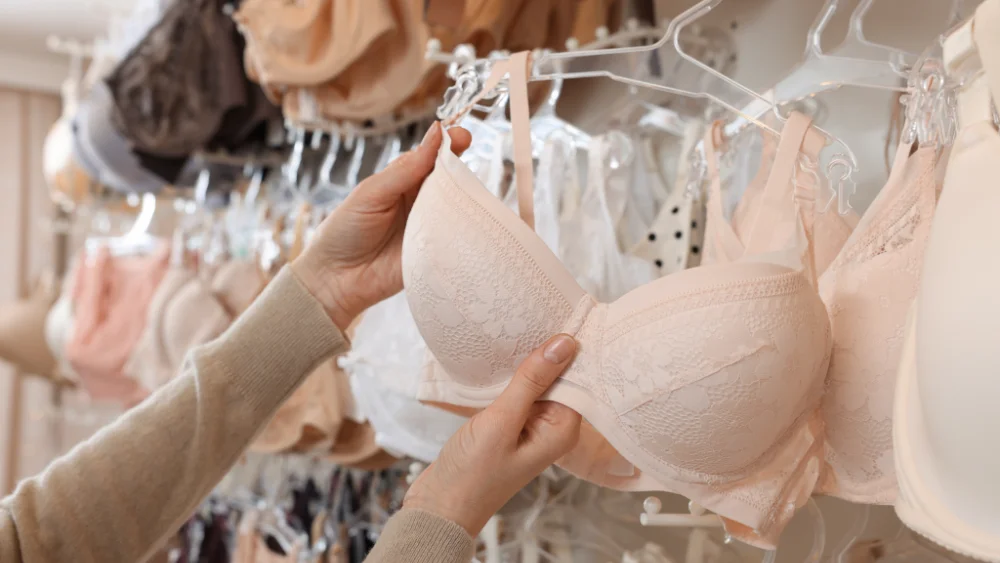Choosing the right lingerie fabric is essential for comfort, functionality, and style. Fabrics like organic cotton, silk, and nylon cater to various needs, ensuring comfort, breathability, and durability. Selecting the right fabric impacts the overall experience and aligns with the growing demand for eco-friendly choices.
Table of Contents
Choosing the Right Lingerie Fabric: Ensuring Comfort, Health, and Seasonal Suitability
Lingerie, as one of the most intimate garments in our daily lives, is deeply connected to comfort, functionality, and health through its fabric selection. Imagine how comforting and gentle it feels when the fabric of your lingerie is soft and smooth against your skin; it’s as though your body and mind are being tenderly cared for. On the other hand, an ill-fitting fabric can cause friction, discomfort, and even lead to skin issues. In these subtle interactions, lingerie is more than just clothing worn on the body; it plays a crucial role in our daily lives, fulfilling multiple functions like comfort, support, and shaping. It is the fabric that makes these functionalities possible.
Choosing the right fabric is not only about personal comfort but also about a conversation between the brand and the market. From a brand perspective, factors like market demand, consumer preferences, and the growing trend toward sustainability must be considered. Modern consumers expect more than just aesthetics and comfort from their lingerie—they want materials that are skin-friendly, environmentally responsible, and meet health standards. With such a wide variety of fabrics available, how does one choose the best fit for their products? This is an important issue every brand must address.
Basic Understanding of Lingerie Fabric
When selecting lingerie fabric, it’s important to know the different types. Fabric generally falls into two categories: natural and synthetic fibers. Natural fibers like cotton, silk, and linen are classic choices for their softness and breathability. Cotton feels gentle on the skin, making it perfect for daily wear. Silk offers a smooth, luxurious touch and is often used in premium lingerie. Linen, valued for its breathability, is a great option for hot weather.

Lingerie, as a second skin, directly impacts our comfort and confidence throughout the day. Have you ever noticed how the feel, elasticity, breathability, and even the color of the fabric can quickly determine whether it becomes your favorite piece? The right fabric not only provides a comfortable wearing experience but also ensures the lingerie’s durability and aesthetic appeal. Imagine lingerie that retains its shape and color after multiple washes—this is a direct result of the fabric quality and selection. On the other hand, an ill-suited fabric brings discomfort, potentially affecting our mood and daily activities.
In contrast, synthetic fibers like polyester, nylon, and Lycra, with their superior elasticity, durability, and support, have become the go-to for modern functional lingerie. Synthetic fibers not only provide better support for the bust and shaping but also enhance the fit and comfort of lingerie by incorporating stretch fibers like Lycra. The combination of different fibers offers designers more creative freedom, allowing them to create lingerie that is both comfortable and functional. Choosing the right fabric is crucial in lingerie design, influencing the garment’s appearance, comfort, and overall wearing experience.
Common Natural Fiber Fabrics
Organic Cotton: A Balance of Sustainability and Comfort
In an era where environmental protection and sustainable development are becoming increasingly important, organic cotton has become the fabric of choice for many lingerie brands. Compared to traditional cotton, organic cotton is grown using natural methods without the use of chemical fertilizers or pesticides. This not only reduces harm to the environment but also makes the lingerie we wear healthier. Its comfort is undeniable, with a soft texture and breathability that feel gentle against the skin, making it especially suitable for daily wear.
Silk: Balancing Luxury and Comfort
Silk has always been synonymous with luxury. Its lustrous shine and smooth feel make every piece of lingerie feel irresistibly charming, offering a gentle, luxurious experience for the body and mind. However, the challenge with silk lies in how to balance comfort with the demands of the high-end market. While silk is lightweight, soft, and breathable, it requires careful maintenance and is less durable than cotton fabrics. Therefore, in high-end lingerie design, finding a way to maintain silk’s luxurious quality while also ensuring daily comfort and longevity is a critical issue for designers and brands.
Bamboo Fiber: The Dual Benefits of Sustainability and Antibacterial Properties
Bamboo fiber, a relatively new eco-friendly material, has become a blessing for individuals with sensitive skin due to its excellent antibacterial properties and breathability. Bamboo fiber is not only environmentally friendly and renewable but also incredibly gentle on the skin, effectively preventing skin allergies and bacterial growth. Bamboo fabric lingerie is soft, lightweight, and breathable, making it ideal for hot summer days or humid environments, ensuring dryness and comfort. For consumers who prioritize skin health and environmental responsibility, bamboo fiber lingerie is undoubtedly an ideal choice.
Linen: The Perfect Summer Lingerie Choice
Linen, an ancient and practical natural fiber, is especially beloved by many women during the hot summer months due to its exceptional breathability and comfort. The natural fiber structure of linen gives it excellent breathability, allowing sweat to be effectively absorbed and keeping the skin fresh and dry. Although linen has a more rugged texture, its natural simplicity and comfort make it particularly well-suited for summer lingerie, especially in markets that favor a natural style. Linen lingerie undoubtedly exudes unique charm in this context.
Common Synthetic Fiber Fabrics

Nylon: The Perfect Combination of Durability and Stretchability
Nylon is widely used in lingerie production due to its outstanding durability and excellent stretchability. The high strength and wear resistance of nylon fibers make lingerie more durable, withstanding daily wear and multiple washes. This lingerie fabric not only provides a smooth, comfortable feel but also ensures a better fit by leveraging its natural elasticity, accentuating the perfect curves of the body. For women who engage in sports or require all-day comfort and support, nylon lingerie is an ideal choice. It provides effective support while maintaining flexibility, avoiding the restrictive feeling often associated with traditional fabrics.
Polyester: The Advantages of Abrasion Resistance and Wrinkle Resistance
Polyester, a key synthetic fiber in lingerie design, is particularly valued for its excellent abrasion resistance and wrinkle resistance. The structure of polyester allows it to maintain its shape and luster even after prolonged wear and multiple washes. For lingerie styles that require frequent washing and long-lasting durability, polyester is a very practical choice. Moreover, the wrinkle-resistant properties of this fabric ensure that it remains crisp and neat even after extended wear, eliminating the need for frequent ironing and saving women valuable time on daily garment care. Especially in the design of functional lingerie, polyester not only provides excellent durability but also maintains good breathability, meeting the needs of modern women in both sports and everyday life.
Lycra: A Perfect Fusion of High Elasticity and Support
Lycra, a highly elastic synthetic fiber, is characterized by its ability to quickly return to its original shape after being stretched. This makes Lycra the preferred fabric for many lingerie brands. It not only provides excellent support for lingerie but also maintains a close fit to the body, shaping natural curves. Whether it’s bras, leggings, or shapewear, Lycra fabric offers comfortable elastic support, helping women maintain elegant lines while enjoying all-day comfort. For consumers seeking a good fit and support, Lycra’s high elasticity enhances the comfort of lingerie and provides uninterrupted support during exercise and daily activities, allowing women to move freely.
Application of Special Function Fabrics
Breathable Mesh Fabric: The Secret to Comfort and Hygiene
Breathable mesh fabric is essential in modern lingerie design. It provides exceptional comfort with its lightweight feel and airflow. Wearing lingerie for hours while staying dry and fresh is possible with this fabric. Its tiny “breathing holes” improve air circulation and help release trapped sweat. This keeps lingerie fresh and hygienic. In hot weather or humid climates, mesh fabric allows the skin to breathe. It helps prevent skin issues caused by sweat and moisture buildup. For women who value comfort and hygiene, this fabric is a game-changer in lingerie fabric technology.
Antibacterial and Odor-Resistant Fabrics: Dual Protection for Sports and Everyday Use
Sports lingerie, as an essential companion for women during exercise, plays a crucial role in preventing bacterial growth. With special technical treatments, the fabric itself is infused with antibacterial properties, effectively preventing the growth of bacteria and the generation of odors during exercise. This fabric is ideal for lingerie worn during activities such as gym workouts or running, not only keeping you fresh but also reducing the risk of skin irritation or discomfort caused by bacterial growth. Moreover, the antibacterial and odor-resistant functions allow you to stay fresh even after prolonged wear, enhancing the overall wearing experience and making each workout more enjoyable.
Tips for Choosing and Using Lingerie Fabric
How to Choose the Right Lingerie Fabric
When selecting fabric, it is essential to carefully choose based on the style of the lingerie. Every design, function, and comfort of the lingerie needs to align perfectly with the fabric. For example, bras require both support and comfort, so fabrics like Lycra or nylon with elasticity and support are ideal. Meanwhile, panties emphasize breathability and softness, with cotton fabric being the best choice to provide all-day comfort for the skin. For sleepwear, fabrics like silk or bamboo offer a luxurious and natural touch, enhancing ease and elegance when worn. In these choices, it’s crucial to consider not only the comfort of the fabric but also its functionality and appearance, balancing all these factors to provide the most ideal wearing experience for women.
Lingerie Fabric Combinations
Fabric combinations are an essential aspect of lingerie design. By skillfully combining different types of fabrics, you can not only enhance comfort but also improve the design of the lingerie. For example, panties can feature soft cotton as the primary fabric, combined with breathable mesh to enhance airflow, achieving both comfort and freshness. Bras can combine smooth silk with more elastic Lycra, ensuring support while also adding shine to the appearance. The key to fabric combinations is complementarity; choosing the right pairing not only improves the comfort of the lingerie but also adds depth and aesthetic appeal to the design.
Market Demand and Lingerie Fabric Selection

The Demand of Different Markets
The market demand for lingerie varies significantly due to regional cultures, climate conditions, and consumer values. In the European and North American markets, consumers often have higher expectations for comfort and functionality. They prefer high-tech fabrics like moisture-wicking, antibacterial, and other functional materials, particularly in sports lingerie and everyday wear. On the other hand, the Asian market, especially in East Asia, places more emphasis on lightweight, comfortable, and breathable fabrics. Natural fibers like organic cotton and silk, with their skin-friendly properties, are often the preferred choice for consumers.
The Eco-Friendly Trend and Lingerie Fabric Selection
As environmental awareness grows, consumer demand for sustainable products has increased. In the lingerie industry, choosing eco-friendly fabrics not only aligns with market trends but also represents a brand’s commitment to social responsibility. More and more consumers are opting for lingerie made from natural, renewable resources like organic cotton and bamboo fibers. These fabrics are not only eco-friendly but also gentle on the skin, making them perfect for everyday wear. At the same time, recycled materials such as recycled polyester and nylon are making their way into the market, reducing the environmental footprint and promoting resource recycling. By selecting eco-friendly fabrics, brands demonstrate their dedication to sustainability while also catering to the strong demand for “green” consumption.
Conclusion: Lingerie Fabric Selection and Brand Differentiation
Lingerie Fabric as a Key to Brand Differentiation
In the highly competitive lingerie market, fabric selection has become more than just a functional decision; it is now a key factor in brand differentiation. By carefully choosing unique fabrics, brands can not only enhance the comfort and practicality of their lingerie but also reflect their personality and innovation through the details. For example, some high-end lingerie brands have successfully made their products stand out in the market by using luxurious silk, eco-friendly organic cotton, or high-tech moisture-wicking fabrics. These fabric choices enable brands to not only meet consumer needs but also create a distinct image in their minds, thereby enhancing competitiveness.
The Impact of Lingerie Fabric Selection on Brand Image
The choice of fabric is not just about seeking comfort and functionality; it also deeply reflects a brand’s values and market positioning. For example, a brand that advocates for environmental sustainability may choose to use natural fibers or recycled materials, conveying its commitment to environmental responsibility. On the other hand, a brand focused on fashion and the high-end market may opt for delicate fabrics like silk and lace to evoke a sense of luxury and elegance. Therefore, the selection of fabric not only shapes the look and feel of the lingerie but also subtly influences consumers’ perception and emotional connection to the brand, ultimately determining the brand’s unique position in the market.

